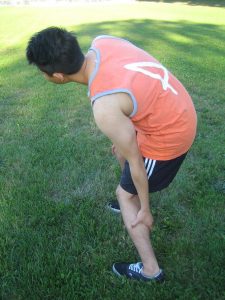A fibula stress fracture involves a small-sized break in the bone. This type of stress fracture is not as common as one that develops on the tibia since the fibula is not accustomed to bearing weight in the same manner.
Indications of a fibula stress fracture
The symptoms of a fibula stress fracture include the following:
- Pain and localized tenderness at the point of the fibula
- Pain in the lower leg while weight bearing but not as sore as a stress fracture of the tibia
- The pain might settle after a period of rest but gradually worsen with activity
Pain in the lower leg while weight bearing but not as sore as a stress fracture of the tibia.
What are the possible causes?
The fibula bone serves as an attachment point for several muscles of the lower leg. It is important to note that the tibia is responsible for bearing weight while the fibula functions as a surface for attachment of the muscles. This leads to traction and winding forces on the bone from the neighboring muscles that over time results to a stress fracture.
Individuals who engage in excessive pronation or rolling inwards of the foot while running are prone since the peroneal muscles are required to strain for an extended period during toe off during the running gait cycle.
Management
The individual should take a break from training or any competition until the localized tenderness of the bone settles. A fibula stress fracture is not likely to show up in an X-ray until 2-3 weeks into the healing process but an MRI or bone scan might reveal damage. Try to take a break from running and other strenuous activities for up to 6 weeks.
A heat retainer specifically for the calf must be used to protect the lower leg muscles as well as minimizing the strain on the fibula. Prior to return to activity, strengthening and stretching exercises must be performed regularly.
Sports massage techniques are also beneficial if performed on the lower leg muscles. This aims on restoring the condition of the muscles to make them supple and flexible. Additionally, the individual should gradually return to training.

